Diversity

Just two days ago at this hour, I was in the midst of an 11-mile journey for John Crawford. Led by young people of color, 85 of us marched through suburban and rural Greene County, Ohio from the Beavercreak Wal-Mart, the site of John Crawford’s death at the hands of police, to Xenia, Ohio, where the special grand jury would consider an indictment of the officers. What was Crawford’s “crime?” Carrying a toy gun around Wal-Mart while talking on a cell phone.
During the march, there were moments when I felt like we had gone back in time, to days of struggle in the rural South, pushing for black lives to matter in this country, from accommodations to the ballot box. Things were different, I thought. Fifty years ago, marchers had a legitimate fear of sniper fire. Buses carrying freedom riders were attacked and firebombed with impunity. Surely times have changed.
Today the grand jury in Ohio announced there will be no indictment of the officers. (The Justice Department later announced it is launching an investigation into the shooting.) The Wal-Mart surveillance video is now public, and it reveals how quickly Crawford’s life was taken. The special prosecutor, in quotes about the case, seems to have not pushed very hard for an indictment. So another black life is lost under absurd circumstances, and the system communicates yet again that black lives don’t matter.

Episcopal Church Presiding Bishop Katharine Jefferts Schori, the first woman elected to head a national branch of the worldwide Anglican Communion, announced Sept. 23 that she will not seek a second nine-year term in office.
Her departure will likely set off debates over her legacy and the future of the 2 million-member denomination.
“I believe I can best serve this church by opening the door for other bishops to more freely discern their own vocation to this ministry,” Jefferts Schori, 60, said in a statement. “I will continue to engage us in becoming a more fully diverse church, spreading the gospel among all sorts and conditions of people, and wholeheartedly devoted to God’s vision of a healed and restored creation.”
Her 2006 election was celebrated as a breakthrough for women leadership in the church; delegates sported pink “It’s a Girl!” buttons after the vote. She remains the only female primate in the Anglican Communion, but last year the Evangelical Lutheran Church in America followed suit and elected its first female presiding bishop.
Jefferts Schori’s current term will end at the conclusion of the Episcopalians’ General Convention in Salt Lake City in June 2015. Church membership during her term has dropped by 12 percent, according to the most recent statistics available from the denomination.
Jefferts Schori’s time as presiding bishop has been lauded by theological liberals and bemoaned by conservatives, but both breakaway Anglicans and Jefferts Schori were instrumental to one another’s rise.
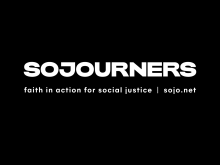

A campus appearance by Ayaan Hirsi Ali, the outspoken Muslim-turned-atheist activist, is being challenged again, this time at Yale University where she is scheduled to speak Sept. 15.
While her previous campus critics have included members of religious groups, especially Muslims, this time the critics include Ali’s fellow ex-Muslims and atheists.
“We do not believe Ayaan Hirsi Ali represents the totality of the ex-Muslim experience,” members of Yale Atheists, Humanists and Agnostics posted on Facebook Sept. 12. “Although we acknowledge the value of her story, we do not endorse her blanket statements on all Muslims and Islam.”
Those statements include calling Islam “the new fascism” and “a destructive, nihilistic cult of death.” She has called for the closing of Muslim schools in the West, where she settled after immigrating from her native Somalia, and is a vocal advocate for the rights of women and girls in Islam.
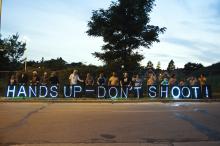
Dr. King said: a “riot is the language of the unheard.”
What happens when folks do not feel like their voices are being heard?
They shout louder.
Rioting is what almost happened in Ferguson, and all of us who live in fragile neighborhoods with a backdrop of deep racial injustice need to pay attention.
In Ferguson, a close-knit community was devastated by yet another injustice. They wanted to be heard. But as peaceful marches began, they were met with unprecedented force.
Tears were met with teargas.
It was as if authorities were putting their hands up over their ears. So the people shouted louder – and the world began to pay attention.
At a fragile moment when emotions were running high, the people of Ferguson had to choose between rioting and nonviolent direct action in the streets. A very small group (many of them arguably out-of-state activists) resorted to some forms of property damage. And it caught the media’s attention.
Some might say it hijacked the headlines.
But that is not how I will remember Ferguson.
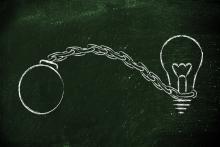
September is often associated with the celebratory beginning of a new school year. It’s a time of hopeful anticipation for students, parents, and teachers filled with new school supplies and new friends.
In many communities, however, the beginning of the school year is a cause for concern and anxiety.
Instead of hallways filled with artwork and sports trophies, many students will walk into prison-like environments complete with metal detectors, and the presence of police and armed security officers. These officers have more than a chilling effect. They also have the authority to arrest students, often for minor misbehavior. When you couple the harshness of the school environment with zero tolerance policies that criminalize children’s non-violent infractions like being late to class, violating a dress code, or even chewing gum, one can begin to see the school discipline crisis.
The patchwork of overly harsh disciplinary policies that funnel children directly from the classroom to the juvenile justice system is referred to as the school-to-prison pipeline. In schools across America, students, especially students of color, who should be sent to the guidance counselor to find out what’s really wrong end up at the police station. These policies are expensive, unjust, and ineffective. They also lower academic achievement, lead to dropout, and do little to make schools safer.
Even more troubling, we find that the rules are different for children of color, who are punished more often and more severely than white students for the same offenses. These students are not behaving any worse than others, but they are disciplined at a higher rate because of racial bias. These same patterns we see in schools are also playing out in the criminal justice system: African Americans are imprisoned at higher rates and given more severe sentences than whites for the same offenses.
The school-to-prison pipeline is a moral and racial justice crisis. Solving the problem will require an all-hands-on-deck solution.
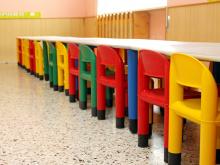
With a new school year upon is us it's appropriate to take a closer look at the troubling and complicated relationship between our nation’s public schools and its criminal justice system.
Growing up in an economically challenged neighborhood in Detroit, it still pains me to remember the sheer number of kids, disproportionately African-American boys, who passed through the juvenile detention system and would later go on to either spend time in prison or who are still in prison now. America’s criminal justice system was omnipresent.
The sad fact is that not much has changed. It’s actually gotten a whole lot worse. America represents less than 5 percent of the world’s population but we have 25 percent of the world’s prisoners. Since the 1970s our prisons have grown by 700 percent. This growth has been most explosive and disproportionate among people of color. Looking at males over the age of 18, 1 out of every 15 African-American men and 1 in 36 Hispanic men in the United States are currently incarcerated. Meanwhile, only 1 in every 106 of white males over 18 are behind bars.
It’s tough to ignore the glaring racial disparities at the center of America’s prison industrial complex. As an African-American woman, Christian, and mother, it breaks my heart and, at times, even tests the limits of my faith. But I also believe in a faith that can move mountains. When it comes to our nation’s criminal justice system, we’ve got mountains to move.
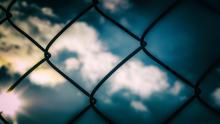
I walked across the school yard and through the ominous painted doors of St. Athanasius Elementary School for the first time. My mother and I had walked hand in hand the long city block from home to the school, across the school yard, through the entrance, down the hallway, heels now echoing against linoleum and lockers as the smell of chalk and mimeographed copies wafted from each classroom we passed.
We entered my second-grade classroom where I was greeted by the teacher who told me to take my seat four heads from the front. That seat was my second home for half of every day for a year.
I had high hopes for second grade. At the very least, I hoped it would be safe. It wasn’t.
The girl who sat behind me demanded 25 cents per day to be my friend — or else. But worse, the white woman charged with teaching our classroom full of African-American children ruled us as if we were in her military camp … or worse… prison.
My teacher once punched me in the back because I forgot to hand in an assignment — in second grade.
Now take that single act of aggression and magnify it: a punch in the back becomes a suspension, an expulsion, or an arrest. Then systematize it. Call it a “Zero Tolerance” policy and spread it across 90 percent of schools in the United States. Then apply the policy inequitably, such that African-American children are punished at higher rates and more severely than white children. That is what happened when the culture of severe punishment promoted by the Tough on Crime movement permeated education systems throughout the 1990s.
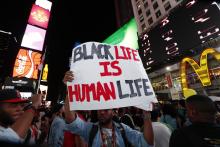
One month ago, the city of Ferguson, Mo., was violently shaken by the shooting death of an unarmed black man whose name is Michael Brown, Jr.
This is not the first time we’ve stood in this place. Michael Brown has been added to the roll call of unarmed black people killed by those hired to protect and to serve. His name joins the names of:
John Crawford , an unarmed Ohio man gunned down inside of a Walmart while examining a toy gun sold in the store.
Eric Garner , an unarmed New York man killed, after stating several times that he was having difficulty breathing, by an officer using an illegal choke hold.
Sean Bell , an unarmed New York man shot multiple times outside of the venue for his bachelor party the night before his wedding.
Oscar Grant , an unarmed Oakland man who was handcuffed, face down, before he was fatally shot.
And so many more black lives, both male and female, ended by the reflexes of a legal system designed to police some and protect others.
So why did the killing of Michael Brown, Jr. ignite such a firestorm of rage in a region and a nation where slain black bodies are commonplace?
This is not one of those neighborhoods that cause political analysts to pontificate over “how something so tragic could happen here.”
These are not deaths that leave communities and congregations struggling to find deeper meaning and psychological factors that might have contributed to the tragic loss of life.
As a matter of fact, since the death of Michael Brown, there have been two killings of black men with documented mental challenges, Ezell Ford of Los Angeles and Kajieme Powell, killed only a few miles from the site of Michael Brown’s death. Yet there have been no roundtable discussions of the role of mental illness in our society sparked by these deaths.
What made Michael Brown’s death different?

Editor's Note: The following transcript is from a homily given in Christ Chapel at Gustavus Adolphus College in St. Peter, Minn. As part of the “From Segregation to Integration through Conversation” faith and learning series, the text for the day was 1 Corinthians 12:14-26.
The color of my skin is white. I am Caucasian. I am white, from head to toe, in case you had not noticed. It is quite possible that you had not noticed, because in case you have not noticed, most days in this place, most all of us have skin that is white. And as those of us that experience winters in Minnesota know better than most, in the midst of a “white out” it is difficult to notice anything that is not white.
While there are some special days with some special circumstances and some special exceptions, we in this place tend to be white people surrounded with other white people. Because the fact of the matter is that most white people in most places tend to have social circles that are mostly filled with other white people.
As was recently reported by the Public Religion Research Institute’s 2013 American Values survey, when respondents were asked to identity as many as seven people with whom they had discussed important matters in the six months prior to the survey, the results revealed just how segregated white social circles actually are. As reported by the study, the social circles of white people in the United States are 91 percent white. In addition, the analysis also showed that over 75 percent of white people reported exclusively white social circles, without any minority presence whatsoever.
All together, the Public Religion Research Institute showed the sociological fact that, even in an increasingly diverse multi-cultural nation, birds in the United States with white feathers — such as my own — continue to flock together. In other words, contrary to the common cliché often given in response to these difficult topics, when it comes to white American people, the facts reveal that "some of our best friends" simply are not black.

A well-established international Christian student group is being denied recognition at almost two dozen California college campuses because it requires leaders to adhere to Christian beliefs, effectively closing its leadership ranks to non-Christians and gays.
California State University, which has 23 campuses, is “de-recognizing” local chapters of InterVarsity Christian Fellowship, an evangelical Christian group with 860 chapters in the United States. The university system says InterVarsity’s leadership policy conflicts with its state-mandated nondiscrimination policy requiring membership and leadership in all official student groups be open to all.
“For an organization to be recognized, they must sign a general nondiscrimination policy,” said Mike Uhlencamp, director of public affairs for the California State University system. “We have engaged with (InterVarsity) for the better part of a year and informed them they would have to sign a general nondiscrimination statement. They have not.”
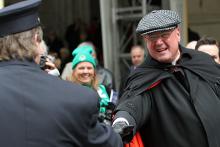
Cardinal Timothy Dolan’s positive reaction to this week’s decision by organizers of New York’s annual St. Patrick’s Day parade to allow gay groups to march under their own banners initially drew charitable responses in many Catholic Church circles.
But it didn’t take long for conservative church critics to turn.
After initially signaling his grudging acceptance, William Donohue of the Catholic League came back with a revised view when he realized that more than one gay group could be allowed to march in the future.
“The goal of these activists, supported by the corporate elite, is to neuter the religious element of the parade,” Donohue said. “This is an Irish-Catholic parade, and if what comes after the hyphen is cut, so will the parade’s support, beginning with the Catholic League.”

With minority students now making up a majority of public school enrollments, a national group of Hispanic evangelicals is calling for strong ties between churches and schools to encourage better academic results.
The National Hispanic Christian Leadership Conference, which includes 40,000 U.S. churches, has launched a website with resources and a bilingual parental toolkit that its officials hope will bridge an “opportunity gap” between Hispanic and other students.
“We say that pastors and principals should meet,” said Carlos Campo, chair of the NHCLC’s Hispanic Education Alliance, at a recent National Press Club news conference. “We say that parents and professors should meet so that we no longer have these false dichotomies, these barriers that keep us apart.”
Ahead of his organization’s annual observance of National Hispanic Education Sunday on Sept. 7, Campo introduced other new programs, including “Becas and Bibles,” which encourages churches to give children Bibles and seed money for scholarships when they are baptized or christened. (“Beca” is the Spanish word for “scholarship.”)

They say a watched pot never boils. But that's not entirely true. Of course a watched pot boils—it's just that intently watching a pot of water reach 212 degrees Fahrenheit is not an incredibly exciting way to spend your time. And so most people get bored or distracted and end up leaving before it ever reaches the boiling point.
Systemic racism is like a heat source that keeps a pot of water simmering at a constant 211 degrees. Extremely hot, but not quite boiling. Every once in a while the heat gets turned up just a tad—like when a frightened white police officer in Ferguson, Mo., shoots a young unarmed black man while his hands are in the air. Or a group of ignorant, overzealous college students from Oklahoma State University create a banner for a football game that makes light of an act of genocide committed against Native Americans by the United States government.
And then the water starts to boil.
Protests are organized. Twitter goes ablaze. Op-eds are written. Civil rights leaders are given the microphone.
And the temperature is brought back down to 211 degrees.
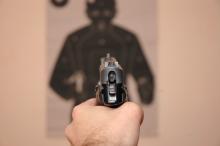
In Ferguson, an unarmed black teenager was killed by police. In reaction, thousands took to the streets in protest. However, rather than attempting to listen, the heavily militarized police immediately made a show of force with armored vehicles, assault rifles, riot gear, and tear gas. People tweeted photos and videos more reminiscent of scenes from Baghdad or Fallujah than of a little Midwestern suburb in America.
Tear gas and rubber bullets were fired into the crowd of peaceful protestors. Multiple reporters were assaulted and arrested. One cop was caught on video screaming “Bring it, all you f---ing animals! Bring it!” Another appeared to be indiscriminately pointing his rifle in people’s faces and yelling “I will f---ing kill you!”
This raises the question: Is what we saw night after night in Ferguson simply a matter of a few “bad apple” cops, a local isolated problem? Or is it indicative of a wider attitude of the police in relation to the use of violence and force? Is it an anomaly, or is this what police in fact consider normal and right? In an op-ed piece in the Washington Post, a 17-year veteran of the LAPD gives us what he believes to be good advice from the perspective of a cop:
“If you don’t want to get shot, tased, pepper-sprayed, struck with a baton or thrown to the ground, just do what I tell you. Don’t argue with me ... and don’t even think of aggressively walking towards me. ”
In one sense he is of course right. If a guy has a gun at your head you should definitely not argue, and just do what he says. But one is led to ask how this reasoning is substantially different from saying to a child, “Honey, when dad is drunk and gets mad, don’t talk back, just be real quiet.” That’s probably sound advice, too, but it begs the question: Is this the world we want to live in? Is that as good as we can do?
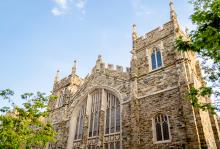
Strange Glory: A Life of Dietrich Bonhoeffer is the second Bonhoeffer book by the University of Virginia religion scholar, Dr. Charles Marsh, whose many other books include analyses of civil rights figures and history. Marsh is himself a child of the south, and his authored works have centered on prominent figures who model a commitment to justice in the face of southern white supremacy. Strange Glory is no different. Marsh’s depiction of Bonhoeffer is the first cradle-to-grave biography to highlight the seminal nature of Bonhoeffer’s experience in America, with African Americans, for his prophetic resistance to Nazism. Marsh also speculates that Bonhoeffer harbored an unrequited longing for more than friendship from his student and closest friend, Eberhard Bethge. Yet, with Strange Glory, I find speculation about Bonhoeffer’s sexuality less intriguing than the question of what Marsh’s representation of Bonhoeffer intends to offer us today.
Bonhoeffer spent a significant amount of time in Harlem while he was a postdoctoral student in America at Union Theological Seminary during the 1930-31 school year. Bonhoeffer became a lay leader at Abyssinian Baptist Church, and many Bonhoeffer scholars believe that his time there was seminal for his prophetic Christian resistance to Nazis. Yet Bonhoeffer’s relationship with Harlem is somewhat ambiguous for the Bonhoeffer that Marsh constructs. Instead, he emphasizes Bonhoeffer’s travels through the Jim Crow South, positioning the south (or, southern blackness) over against the north or northern, Harlem blackness as the primary source of African-American Christian influence on Bonhoeffer.
In fact, Harlem blackness gets a bad rap in Marsh’s Bonhoeffer story with this juxtaposition of southern vs. northern blackness.
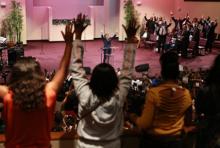
ST. LOUIS — Justice was a recurring theme as thousands of mourners packed the mammoth Friendly Temple Missionary Baptist Church on Monday for the funeral of Michael Brown, a black teen whose fatal shooting following a confrontation with a white police officer set off weeks of sometimes violent protests.
The Rev. Al Sharpton, among the speakers, called for a “fair and impartial investigation” into the shooting.
“We are not anti-police, we respect police,” Sharpton said. “But those police that are wrong need to be dealt with just like those in our community who are wrong need to be dealt with.”
Benjamin Crump, a lawyer representing Brown’s family, alluded to the “three-fifths” clause in the Constitution for counting slaves (which actually was an anti-slavery clause) and demanded that Brown get “full justice, not three-fifths justice.”
Brown’s body was being laid to rest, but the controversy surrounding the Aug. 9 shooting was far from over. Prosecutors have not determined whether the Ferguson police officer, 28-year-old Darren Wilson, will face charges in Brown’s death.
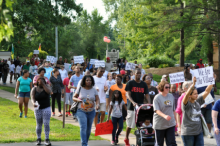
FERGUSON, Mo. — Ever since Michael Brown, a young, unarmed African-American, was shot by a police officer on Aug. 9, various crews have played a part in achieving the tentative peace that has taken hold of the St. Louis suburb once rocked by protests.
Some wear black T-shirts with large white letters that spell out “Peacekeepers.” Others dress in bright orange shirts and call themselves “Clergy United.” All acknowledge that the Nation of Islam has been a key player since the very beginning.
Last week, Capt. Ronald S. Johnson of the Missouri Highway Patrol, who took over the police security patrol in Ferguson, acknowledged on national television that the Nation of Islam and other groups — such as Black Lawyers for Justice — helped control the crowds on West Florissant Avenue. Others on social media pointed out that the Nation of Islam protected businesses from looters.

Like many of you, I’ve been overwhelmed and deeply saddened by the events that have transpired in Ferguson, Mo. And at times I’ve felt helpless, 350 miles away in Cincinnati, as friends of mine are in Ferguson praying, marching, organizing, and working for peace and justice.
In my conversations with friends of color, I have witnessed their pain and frustration and deep angst over the events of Ferguson. The past two weeks have hit very close to home for them.
With white friends, the response has been mixed, but the overwhelming sentiment is one I’ve already identified: helplessness. I am not satisfied with this response. I believe there are ways we can respond, bear witness, be in solidarity and work for justice in this moment. Our love for God and neighbor demands we engage. If you are like me, you are praying without ceasing for the Shalom, peace, and justice of God to reign in the hearts and minds and streets of Ferguson and throughout this nation and world. So how can we pair our prayers with constructive action?
Here are ten ways white Christians can respond to Ferguson.

As the Rev. Barbara Williams-Skinner collected signatures for a statement by leaders of African-American church groups about the Ferguson, Mo., police shooting of Michael Brown, she found more people wanted to join in.
The general secretary of the National Council of Churches wanted to add his name; an Asian-American evangelical leader, too.
What started out as a “Joint Statement of Heads of Historic African American Church Denominations” has become an interracial cry for justice.
“It’s touching hearts of people who have sons and who know that their sons would not be treated this way,” said Williams-Skinner, co-chair of the National African-American Clergy Network, on Thursday. “They know it’s wrong. They know it’s wrong before God. And they are responding on a human level.”